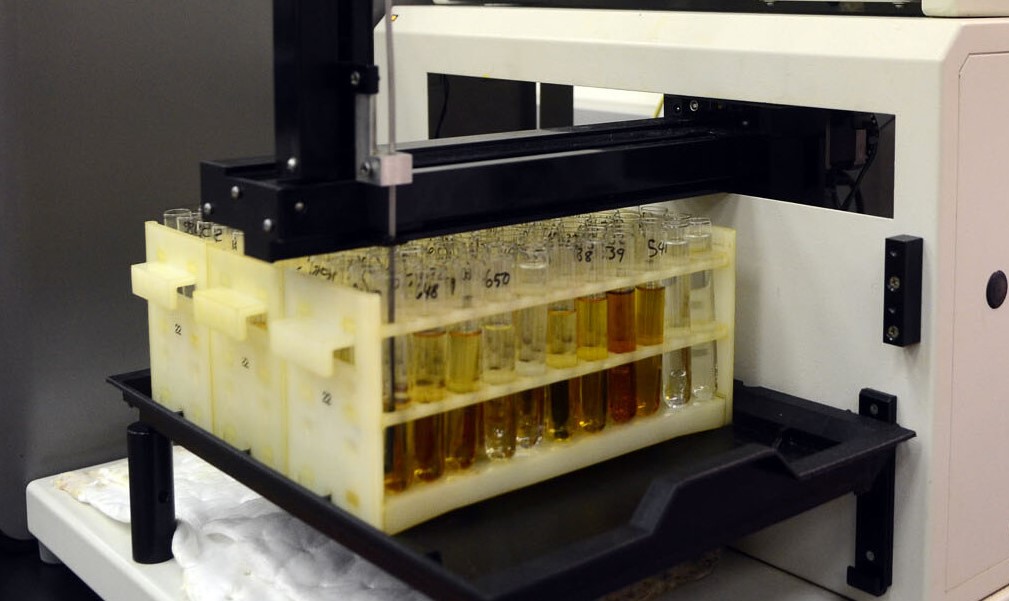FTIR Spectroscopy
Every compound has a unique infrared signature. FTIR Spectroscopy monitors key signature points of a specific lubricant in the spectrum. These signatures are usually common contaminants and degradation byproducts unique for a particular lubricant.
Molecular analysis of lubricants and hydraulic fluids by FTIR spectroscopy produces direct information on molecular species of interest, including additives, fluid breakdown products, and external contamination. It compares infrared spectra of used oil to a baseline spectrum.
Operating Principle
Infrared radiation is passed through an oil sample. Different molecular structures within the sample will absorb the radiation at specific wavenumbers and a spectrum is generated. By comparing the amount of energy absorbed or transmitted at specific locations on the spectrum various molecular features can be quantified.
Significance
This test is used to monitor molecular species of interest in the oil sample, such as degradation products, additives and contaminants. Degradation products that are commonly monitored include oxidation by-products such as acids and esters, nitration and sulfate by-products. This test can also be used to monitor the concentration of antioxidant additives for R&O type lubricants. Finally, contaminants such as glycol and soot can be detected using FTIR spectroscopy.
Applications
This test can be used for industrial and automotive applications.


